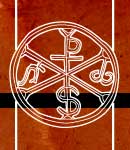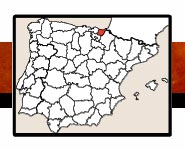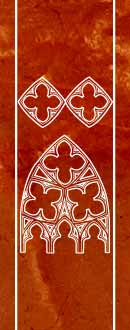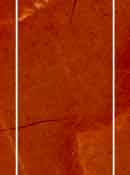


 |
 |
||
 |
|||
 |
/GUIP-COMPLE/GUIP-Hondar-40.jpg) |
-55/BOOK-cort-40.jpg) |
 |
/GUIP-COMPLE/GUI-Hondar-W-50.jpg) |
||
/GUIP-COMPLE/TT-GUI-Hondar-W-50.jpg) |
|||
 |
AYUNTAMIENTO DE HONDARRIBIA El ayuntamiento de Hondarribia es un precioso edificio de estilo barroco, que se data en el siglo XVIII, en la primera planta hay un pórtico con 3 arcos de medio punto, encima hay un balcón sostenido por mensuras o canecillos, y 2 grandes escudos heráldicos, con amplio alero de madera. VISITA : El contacto es Tlf. 943.112.213 y udala@hondarrivia.eus |
/250-GUI-Hon-Ayu-40.jpg) |
TOWN HALL OF HONDARRIBIA The town hall of Hondarribia is a beutiful baroque building, dating from the 18 th century, on the first floor there is a portico with 3 arches, above there is a balcony supported by measurements or corbels, and 2 large heraldic shields, with wide wodden eaves. VISIT : The contact is Tlf: 943.112.213 and udala@hondarrivia.eus |
 |
EL FUERTE DE GUADALUPE El fuerte de Guadalupe en Hondarribia se data en el siglo XIX, ha sido prisión (Guerra Civil) y cuartel. Podrás contemplar toda la arquitectura militar de la época, como las casamatas, galerías, fosos, túneles etc... VISITA : El acceso al fuerte de Guadalupe es gratuito. Se realizan visitas guiadas ( info@armaplaza.eus , o teléfono 943.643.677) en castellano por 6 €. |
/250-GUI-Hon-FGu-40.jpg) |
THE FORT OF GUADALUPE The Fort of Guadalupe in Hondarribia dates back to the 19 th century, has been a prison (Civil Spanish War) and barracks. You can see all the military architecture of the time, such as casemates, galleries, pits, tunnels etc. VISIT : Access to the fort of Guadalupe is free. Guided tours ( info@armaplaza.eus ) telephone 943,643,677 are conducted in Spanish for €6. |
 |
ACCESO A HONDARRIBIA: Buena parte de los edificios más destacados se ubican en la calle Nagusia (ayuntamiento, Palacio Zuloaga, iglesia de Santa María), esta calle comienza en la Puerta de Santa María y termina en la Plaza de Armas. En la Plaza de Armas se ubica el Fuerte de Carlos V, el palacio de Eguiluz se ubica muy cerca. En la plaza del obispo se ubica el Palacio de Etxebastenea. Otros edificios están en los alrededores de Hondarribia (fuerte de San Telmo, iglesia de Guadalupe y fuerte de Guadalupe); pero hay paneles para acceder a ellos. ACCESO PARA MINUSVÁLIDOS : En algunos monumentos hay algún escalón (castillo de Carlos V, iglesia de Nuestra Señora del Manzano), en otros el espacio es grande y se precisa de ayuda (fuerte de Guadalupe, iglesia de Guadalupe), en otros el acceso es restringido, por ser privado o ser necesario ser usuario (Ayuntamiento, palacio de Zuloaga, palacio de Etxebastenea, palacio Eguiluz, fuerte de San Telmo); en otros el acceso es factible (Puerta de Santa María) |
/350-PLN-Hondar-50.jpg) |
ACCESS TO HONDARRIBIA: From A-8 there are and access. Many of the most prominent buildings are located on Nagusia Street (Town all, Zuloaga Palace, Santa María church and Casadevante House), this street begins at Santa Maria Gate and ends at Plaza de Armas. In the Plaza de Armas is located the Fort of Carlos V; the palace of Eguiluz is located very close. In the square of the bishop is the Etxebastenea Palace. Other buildings are around Hondarribia (San Telmo Fortress, Guadalupe Chuch and Guadalupe Fort); but there are signpostes to access them. ACCESS FOR HANDICAPPED : Unequal access, in some monuments there is some step (castle of Carlos V, church of Our Lady of El Manzano, Guadalupe church), in others the space is large and needs help (Guadalupe fort), in others the access is restricted, for to be private or to be necessary to be a user (City Hall, Zuloaga Palace, Etxebastenea Palace, Eguiluz palace, San Telmo fort); in others access is feasible (Gate of Santa Maria). |
||||
 |
|||||||
 |
 |
|||||||||||||||
| SAN SEBASTIAN | HONDARRIBIA | ||||||||||||||
Junio de 2018 |
UROLA-COSTA | ALTO DEVA | |||||||||||||
(INFO PRÁCTICA) |
|||||||||||||||
WEB DESARROLLADA POR EXPERTOS EN ARQUEOLOGÍA Y TURISMO - WEB DEVELOPED BY ARCHAEOLOGY & TOURIST EXPERTS |
|||||||||||||||